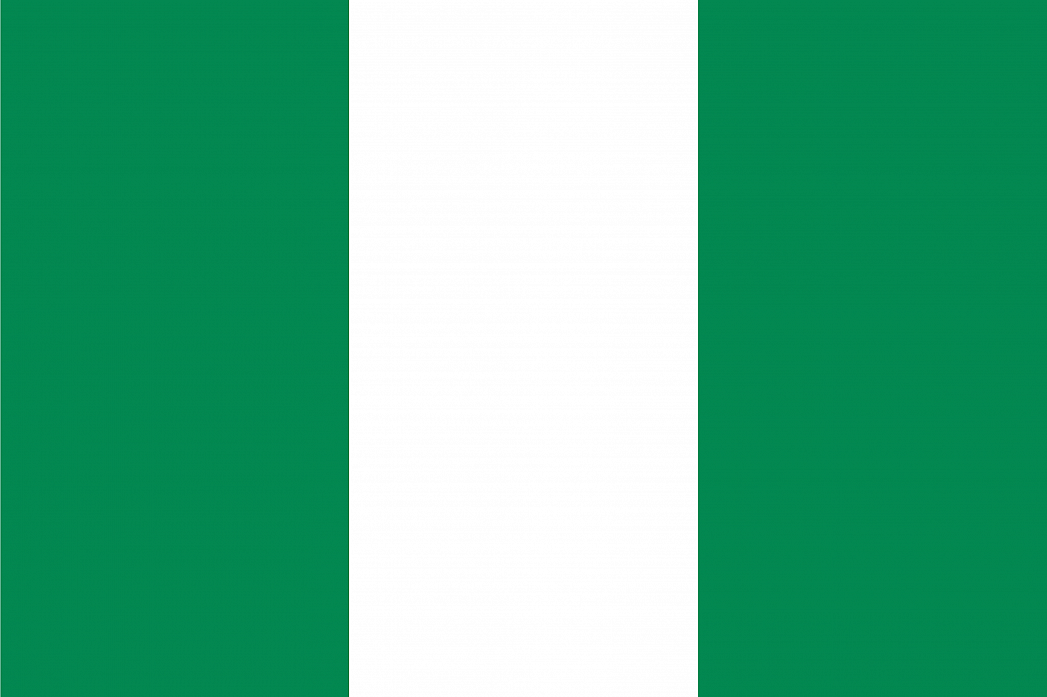The flag of Nigeria consists of three equally sized vertical bands of green, white, and green. In 1959, the government of Nigeria held a competition and placed newspaper advertisements around the world in order to find their new flag. This flag was officially adopted by the country on 1 October 1960, the same day that independence from the United Kingdom was declared.
According to the designer of the flag, the green bands are a symbol of the agriculture in Nigeria which has provided the Nigerian people with food for centuries. The white central band is representative of the peace and unity found in the new republic of Nigeria. The Flag and Coat-of-Arms Ordinance of 1960 states the correct use and the symbolic importance of the national flag.
The national flag of Nigeria was designed by Taiwo Akinkunmi, commonly referred to as "flag man" by many in the country. This design was submitted by Akinkunmi to the government of Nigeria while he was studying engineering at Norwood Technical College in London. The Nigerian government, who were preparing for their independent republic to become a reality, approved the design in 1959, one year before the official adoption of the new flag. Akinkunmi won 100 pounds for his effort as well as a place in the history books of Nigeria.
There are nine previous flags of the region or country that have been used since 1887 when the Royal Niger Company established trading routes and a colony in Nigeria. All nine of these flags feature the Union Jack in the top left-hand corner which reflects the colonial ties between the United Kingdom and Nigeria. The flag of the Colony and Protectorate of Nigeria was used from 1914-1960 and is the most recognized symbol of past colonial rule.
This page was last modified on May 1st, 2018
More on Graphicmaps

Published on 2019-11-06
What is a Trade Embargo?

Published on 2019-11-04
Which Two Countries Used to Have the Same Flag?

Published on 2019-09-16
What Is the Only Two-Sided State Flag?

Published on 2019-09-16
Which Country Flag Looks Like the Texas Flag?

Published on 2019-08-29
Flags That Resemble the US Flag

Published on 2019-08-20
